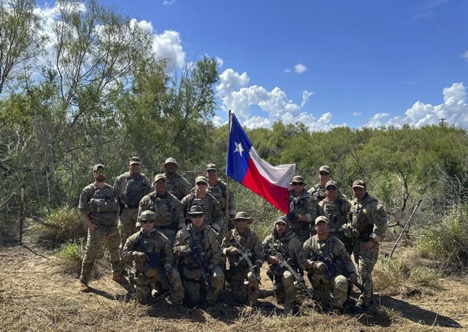CBP Port ‘Encounters’ Tripled at the Northern Border in FY 2022
Overshadowed by the historically high level of illegal migration at the Southwest border is a surge in CBP encounters at America’s northern border, with Canada. Encounters there increased about 300 percent in FY 2022 compared to the prior fiscal year. In the words of American singer-songwriter Stephen Stills, “There’s something happening here, but what it is ain’t exactly clear”. But I have some guesses.
CBP Encounters. By way of background, the term “CBP encounters” is novel, a recent construct used to describe the sum total of illegal entrants apprehended by Border Patrol and aliens deemed inadmissible by CBP officers at the ports of entry.
When I talk about the Southwest border, I rarely refer to “encounters”, because most of the encounters there — about 92 percent in FY 2022 — are Border Patrol apprehensions.
There is also more historical data on Border Patrol apprehensions by which to identify trends. Records for total apprehensions at all U.S. borders — Southwest, northern, and coastal — go back to the Coolidge administration in FY 1925 (22,199 total apprehensions). Southwest border apprehension records are of more recent vintage, dating to the Eisenhower administration in FY 1960 (when they totaled 21,022).
The former INS did not compile robust numbers on aliens deemed inadmissible at the ports, and CBP has been late to the game, as well. There are Southwestern border port numbers that date to FY 2017 (111,275), but prior to that, you would need to pore over various documents to get a complete picture.
At the northern border ports, solid numbers are available beginning in FY 2020, when 30,220 aliens were deemed inadmissible by CBP officers there.
Northern Border. The Southwest border is expansive, 1,954 miles (give or take), running from the Gulf of Mexico to the Pacific Ocean along the Rio Grande, through the Sonoran Desert, and down to the shores of Imperial Beach, Calif., at “Friendship Park” (“Parque de la Amistad”).
The northern border, however, is massive: 5,525 miles, 3,145 miles on land, and 2,380 miles over water, much of it along the 49th parallel, “the longest undefended international boundary in the world”. Alaska alone accounts for 1,538 of those miles. There are more than 100 land border roadway crossings and about 20 rail crossings between the two nations.
Inadmissible Aliens at the Northern Border. CBP encounters at the northern border are practically a mirror image of what they are at the Southwestern one. In FY 2022, 107,000-plus aliens were deemed inadmissible at the Northern border ports, while just 2,238 aliens were apprehended by Border Patrol agents between the ports there.
That’s more that double the 916 aliens whom agents apprehended in FY 2021, admittedly a down year compared to FY 2020, when Northern border agents apprehended 2,155 illegal entrants.
The increase in apprehensions at the northern border, however, was nothing like the surge in aliens deemed inadmissible there. In FY 2021, CBP officers stopped just over 26,250 aliens at the Northern ports, just slightly fewer than the 30,220 aliens (as noted) deemed inadmissible there in FY 2020.
Who were those inadmissible aliens? Nearly 40,500 were Canadian nationals, just over 17,000 were from India, 6,686 were from China, fewer than 2,000 were Colombian, more than 1,500 were from the Philippines, and about 1,300 were Ukrainians. That said, more than 32,000 were “others”, from farther afield.
Possible Reasons for the Increase. If I had to make a guess based upon this imperfect information, many of those deemed inadmissible at the northern border ports were turned away because they lacked proof of Covid-19 vaccination, a mandate that is still in effect for entry by foreign nationals into the United States.
While 83 percent of Canadians have been vaccinated for the novel coronavirus, 17 percent haven’t, and an even higher percentage of Canadians have not been vaccinated in the prairie provinces of Alberta, Saskatchewan, and Manitoba, and in the largely Francophone province of Quebec, all provinces from which cross-border travel, particularly in the cooler months, is common.
That vaccination mandate would account for some, but not all, of the spike in inadmissible aliens at the northern border ports in FY 2022. Another factor likely has to do with the large number of foreign nationals north of the border, where more than a fifth of residents are immigrants.
Many Indian and Chinese nationals are what used to be known in Canada as “landed immigrants” (now “permanent residents” as here), Canadian “green card” holders. In FY 2021, according to the punctilious recordkeepers in Ottawa, nearly 1.35 million Canadians (in a country of just over 36 million) were of Indian ethnic or cultural origin and an additional 1.7 million-plus were Chinese.
And many of them are newcomers. According to Forbes, 80,685 Indian nationals obtained permanent residence in Canada in 2019, a 105 percent increase over 2016. That trend has continued, and in 2021, Canada admitted close to 100,000 Indian nationals for permanent residence. Nearly 25,000 Chinese nationals entered Canada with green cards in FY 2021, as well.
Canadian green card holders are required to have visas to enter the United States unless they are nationals of “Visa Waiver” countries, a list that does not include India, China, Colombia, the Philippines, or Ukraine. Many of the recently arrived may not be aware of that mandate, but the CBP officers at the ports certainly are.
There may be some overlap between the visa requirement and the vaccination mandate. That said, if a foreign national in Canada is going to go to the trouble of getting a visa, they are probably going to ensure that they meet the vaccination requirement, as well.
Conversely, however, multiple-entry tourist visas can be good for up 10 years, so there are likely a lot of Canadian permanent residents who had such visas and figured they could simply pop down for a visit now that most of the Covid-19 pandemic has waned.
Given that 90 percent of Canadians live within 100 miles of the United States — roughly the distance between D.C. and Richmond — such trips have not been uncommon in the past.
The idea that there is a vaccination/visa mandate overlap is supported by the large percentage of those Indian and Chinese nationals deemed inadmissible at the northern border who were expelled under CDC orders issued pursuant to Title 42 of the U.S. Code in response to the Covid-19 pandemic.
Fewer than 8 percent of Canadian nationals deemed inadmissible at the Northern border ports were expelled under Title 42, while 20 percent of Chinese nationals, nearly 30 percent of Indian nationals, and more than 35 percent of the nationals of “other countries” were.
Exclusion under Title 42 does not count as a removal, and so it does not carry the penalties that removal from the United States does. CBP officers at the northern ports were likely trying to cut unwary foreign nationals a break.
Why not the Canadians, then? There are any number of other grounds of inadmissibility in section 212 of the Immigration and Nationality Act that may have applied to them (criminal grounds in particular), which would explain the differing treatment.
Safe Third Country Agreement. If any of those non-Canadians deemed inadmissible at the northern border ports were coming seeking asylum, most should have been turned around, because Canada is the only nation with which that the United States has a “safe third country agreement”.
As the Canadian government explains: “Under the Agreement, refugee claimants are required to request refugee protection in the first safe country they arrive in, unless they qualify for an exception to the Agreement.” “Refugee claimant” in that context is equivalent to “asylum seeker”.
The exceptions to that agreement are for third-country nationals who have visas to come to or who have family in the United States, unaccompanied alien children (95 of the inadmissibles, 54 of them Canadian), and “public interest exceptions”.
I note, as an aside, that Canada’s highest court heard a claim in early October that the agreement should be abrogated because the United States is not safe for asylum seekers, as they could be detained here or removed back to face persecution. I am not sure that there is much truth to either proposition, at least under the current administration.
Back to the main point, however, there may be several Indian, Chinese, Colombian, Filipino, and “other” nationals in Canada with family in the United States who are applying for asylum here and whom those inadmissible aliens are seeking to join. Processing through the ports would be the most efficacious way to make that happen.
More Information Is Needed. All that I can say for sure is that there was a massive increase in aliens deemed inadmissible at the northern ports of entry in FY 2022, and that the still-current Covid-19 vaccination mandate for entry to the United States likely played an outsized role. Aside from that, until DHS provides some additional information, all I can say is that what’s happening at the northern border “ain’t exactly clear”.






